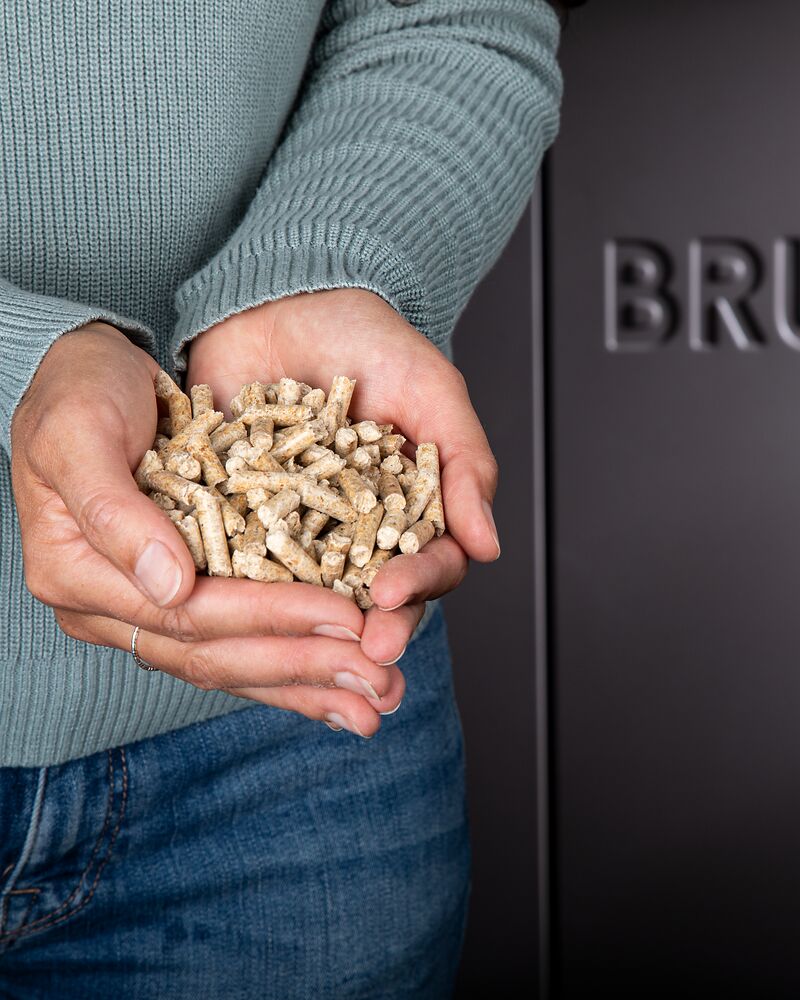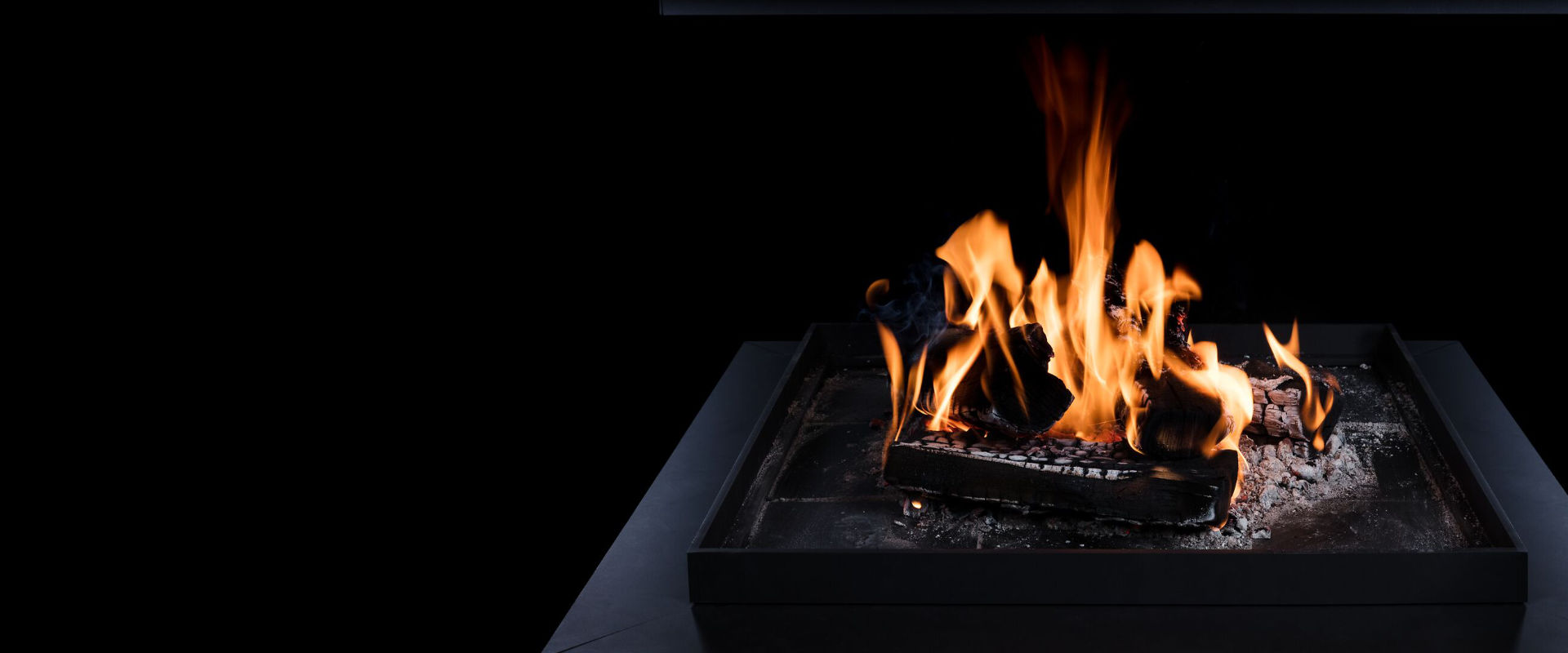It’s not only the skyrocketing prices of gas and oil that are driving consumers to look for alternative heating options – environmental awareness is also growing. Gas and oil heating rely on fossil fuels, which are major sources of CO2 emissions. On top of that comes a strong dependency on international suppliers. That’s why heat pumps, solar thermal systems and wood or pellet heating are now in the spotlight as sustainable alternatives.
What can replace a gas heating system?
New buildings are increasingly equipped with heat pumps – in Germany, already about one in three. The heat pump is so popular because it uses free environmental energy found in air, ground and water, depending on the type. The principle is simple: inside the system, a refrigerant absorbs heat from the air, ground or water, evaporates, and is then compressed. The resulting heat is transferred to the heating system or used to produce hot water.
Another major advantage of heat pumps is their high efficiency – one kilowatt of electricity is enough to generate about three to five times that amount of heat energy on average over the year. In addition, heat pumps meet the requirements of the Energy Saving Ordinance and are easy to install.

When does a heat pump not make sense?
There are also some downsides. Heat pumps are more expensive to buy and depend on electricity prices. The fact is: they work most efficiently at outdoor temperatures between 2 and 15 degrees Celsius. When it gets colder, their performance drops quickly – exactly when you need the most heat.
To prevent the house from cooling down, an electric heating element switches on to provide the missing heat for water and heating. However, it consumes a lot of electricity – and electricity is currently expensive.

Heat pump combined – the unique BRUNNER solution
Peak loads are reduced by combining the heat pump with a water-bearing fireplace or tiled stove that uses wood as fuel. Here’s how it works: an intelligent, electronically controlled system communicates via the heat pump and informs the homeowner as soon as efficiency drops due to low temperatures.
Using the display control, the system can then instruct the homeowner to fire up the water-bearing stove or fireplace and add wood. The fireplace transfers its excess heat to a hydraulic tower with an adjacent buffer tank, which in turn heats the water for the heating system.
The heat pump is automatically relieved, and the entire heating setup is perfectly balanced both hydraulically and in terms of control technology. A combination of photovoltaic and heat pump systems is also possible. In this setup, the photovoltaic system produces the electricity that the heat pump needs for heating.
A heat pump is not only an alternative to gas heating but also a great alternative to oil heating – just like a pellet heating system.
Alternative to oil heating – pellet heating
A pellet heating system is a great replacement for an old oil boiler for several reasons. Wood is a renewable, locally sourced raw material, and producing pellets requires very little energy. In addition, a pellet heating system leaves the smallest CO2 footprint of all.
A BRUNNER pellet heating system offers high efficiency, quiet operation, minimal power consumption and extremely low standby losses. For even more heating technology, it can be expanded with the BRUNNER heating center (BHZ).
This allows integration of a fresh water station for hot water production, additional heating circuits, a fireplace connection or the use of excess solar power through a photovoltaic system.

Solar thermal energy
Solar thermal systems convert the sun’s energy into heat using collectors. However, outside the sunny summer months, solar thermal alone is not enough to cover a home’s full heating demand. It therefore needs to be combined with another system. In the past, gas heating with solar support was popular, but this option is becoming less attractive due to supply shortages and rising costs. Those who combine solar thermal energy with other renewable systems should keep in mind that this means double investment and maintenance costs.
Alternative heating for older buildings
Replacing a heating system in an older building can be challenging because many modern solutions don’t fit well with the existing structure. Before deciding, you should check how well the house is insulated, how much space is available and where, which type of fuel you want to use in the future, and how heat is currently distributed in the house. Once these points are clear, an old building can also be heated with alternative systems like a heat pump or pellet heating, complemented by water-bearing fireplaces, solar thermal energy or photovoltaic systems.
What is the cheapest way to heat?
Rising prices for gas, oil and electricity make it difficult to find the right alternative heating system. It should be efficient, sustainable and free from dependencies. When it comes to the cheapest way to heat, several factors must be considered – investment costs, available subsidies, running costs and energy prices.
For example, a gas heating system may seem affordable at first glance, but the extremely high gas prices quickly put that into perspective.

Which heating system is fit for the future?
Government regulations have become increasingly strict regarding energy use and emissions in buildings. These focus on reducing heat demand through proper insulation and integrating alternative heating systems.
Heat pumps are ideal for well-insulated new buildings, especially in combination with photovoltaic systems or a water-bearing fireplace or tiled stove. Solar thermal systems are a great addition to other heat sources such as traditional oil or gas boilers or heat pumps and can be combined into a hybrid heating system.
A pellet heating system is also a future-proof solution. It generates heat from burning wood – a renewable and sustainable resource.
Conclusion
There are many alternatives to gas or oil. In most cases, the best heating solution is a combination of different renewable components. Good advice is key here – talk to your energy consultant and heating installer.




